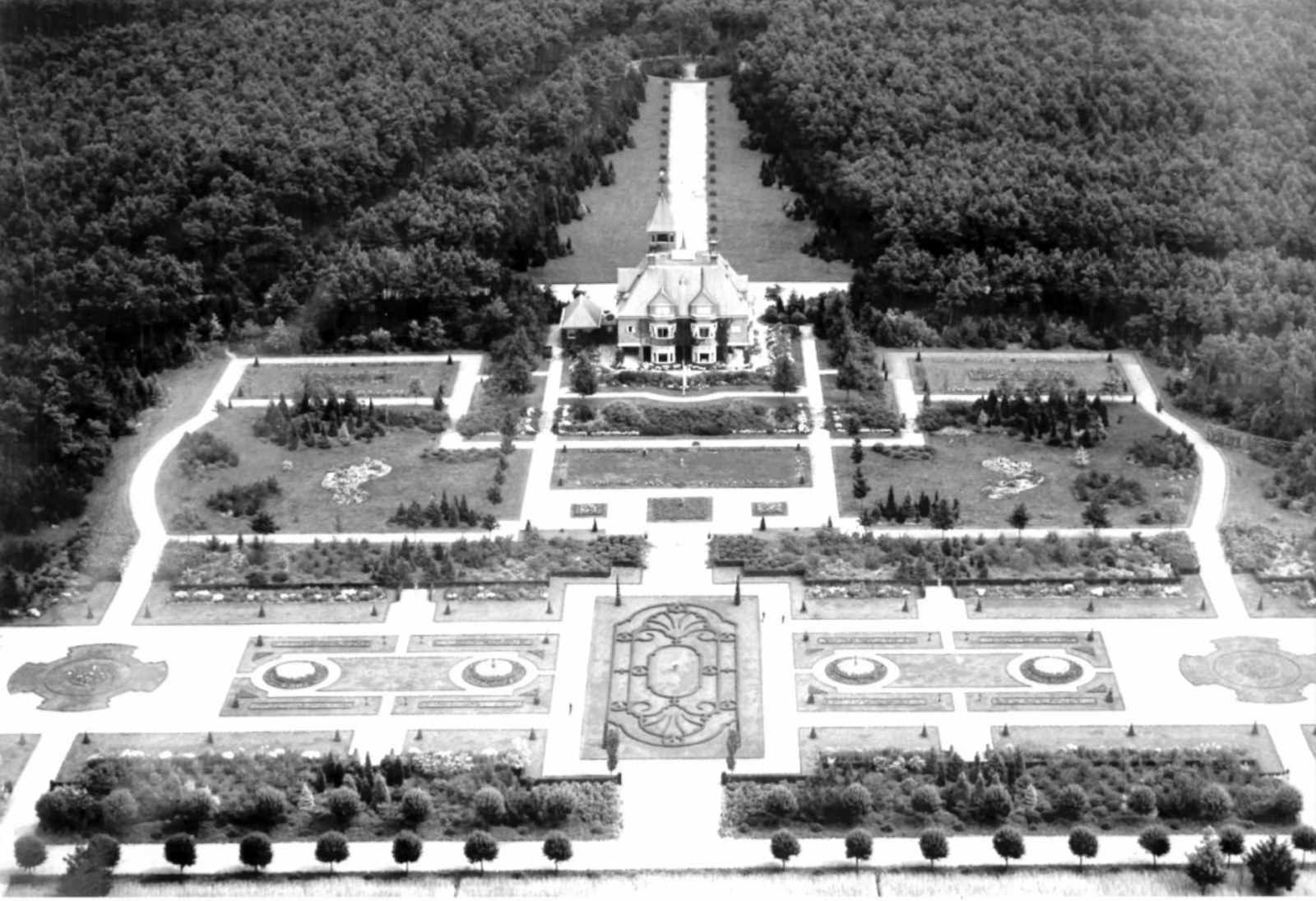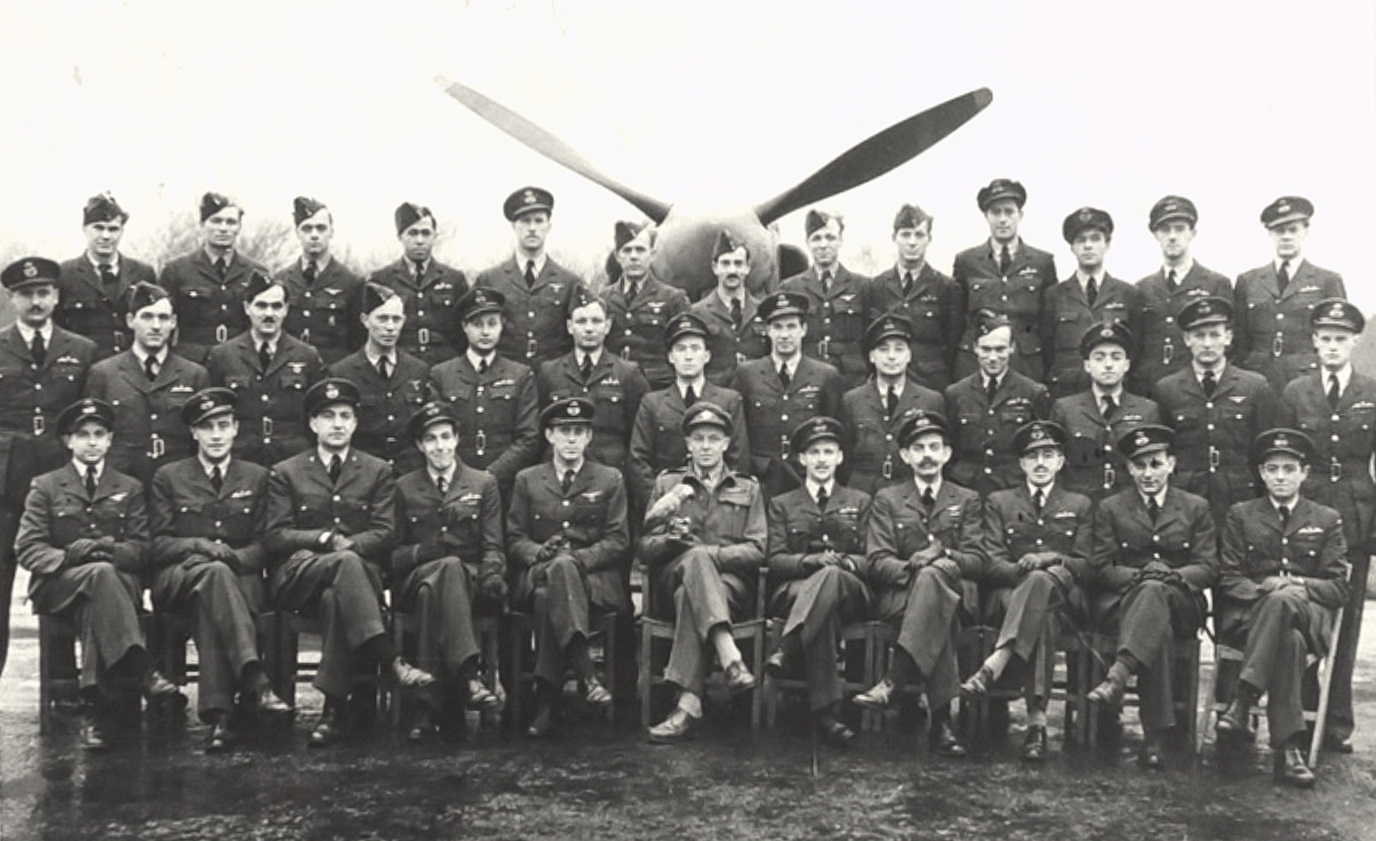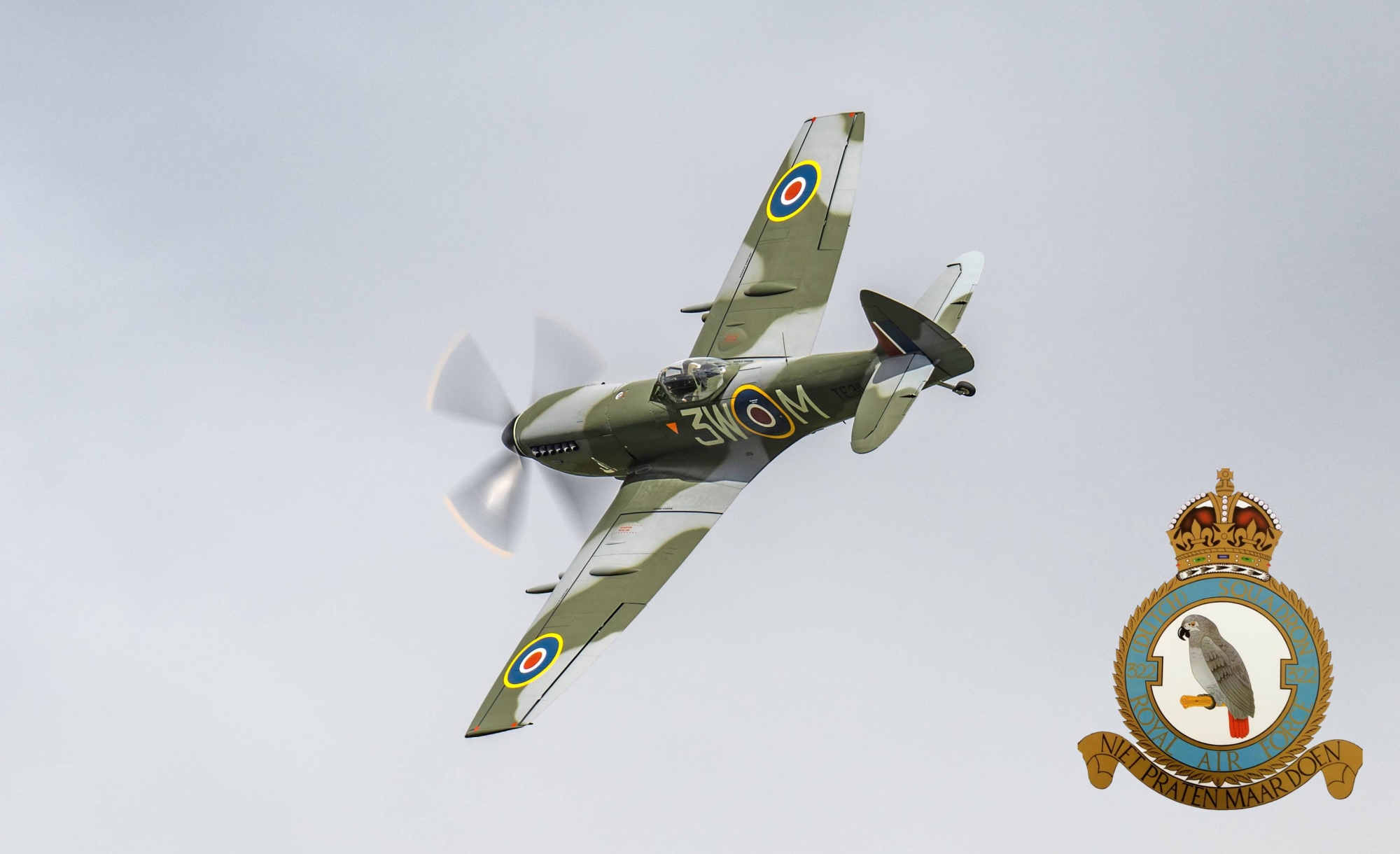322 (Dutch) Squadron 28th January 1945
Header Image: BBMF Spitfire Mk XVI TE311 in its 322 (Dutch) Squadron markings and code letters ‘3W-M’. (Photo: Claire Hartley)
Regular followers of the BBMF will know that the Flight’s Mk XVI Spitfire, TE311, is currently painted on its port side in the markings of a wartime aircraft of 322 (Dutch) Squadron – TD322 – which had the code letters ‘3W-M’. TD322, a low-back, clipped-wing Spitfire, arrived to join 322 Squadron in April 1945 as a replacement aircraft. It adopted the code letters of a previous high-back Mk XVI Spitfire, RK840, which had been marked as ‘3W-M’ and which met a tragic end 80 years ago this month, on Sunday 28th January 1945.
The 322 Squadron Form 540 (Official Record Book) entry for 28th January 1945 records: “More snow falling and bitterly cold. Weather cleared in the afternoon and a task was laid on.” The squadron, in conjunction with 66 Squadron, was tasked with a low-level bombing attack from its base at Advanced Landing Ground B-79, Woensdrecht, in the Netherlands, against a German headquarters in the Villa Ruiterberg, near Doorn, which reportedly housed a Saboteur Training School. The gothic-style mansion had been built in the early twentieth century with impressive geometric formal gardens, but during the Second World War it was taken over by the German occupiers. As it turned out, there were no anti-aircraft guns protecting the German headquarters.

The 12 Spitfires on the raid were led by the C.O. of 322 Squadron, Squadron Leader ‘Peggy’ O’Neill DFC and Bar. The commander of 132 Wing, Group Captain Douglas ‘Zulu’ Morris DFC also flew on the raid as O’Neill’s number two. Taking off from Woensdrecht at 1510, each of the Spitfires was carrying a 500lb bomb on the centreline and two 250lb bombs under the wings. The bombs were fitted with 11-second delay fuzes to allow the aircraft dropping them to clear the target area before they exploded.

The attack on the villa was successful, with 11x 500lb bombs and 22x 250lb bombs dropped on the target. The 322 Squadron ORB reported: “The target was located satisfactorily and the attack was pressed home from low level with no opposition. The whole front of the building collapsed on fire and the north west corner was shattered. Later reconnaissance proved that the house was completely demolished. Unfortunately, we lost a good pilot. Flight Sergeant Kooy’s aircraft was believed to be hit by a bomb bursting in front of it. He crashed and is believed to have been killed. A sad loss for the squadron as he was a most efficient pilot and a very capable NCO.”
Dutch pilot Cornelis ‘Cees’ Kooy (or Kooij) had been with 322 Squadron since 1943. He had been credited with destroying three V-1 flying bombs during the summer of 1944, when 322 Squadron were flying Spitfire Mk XIVs protecting the UK on ‘anti-diver’ patrols. Kooy was 27 years old when he lost his life. He became the first Dutch fighter pilot to die during air operations from Dutch territory since the country had been overrun by the Germans in 1940.

Kooy’s body was temporarily buried by the Germans on 30th January 1945 at the General Cemetery of Doorn as “unknown”, but after the war he was reburied under his name at the Grebbeberg cemetery near Rhenen, where he now rests.
Those code letters ‘3W-M’ on the port side of BBMF Spitfire TE311 have a tragic story to tell.
LEST WE FORGET







